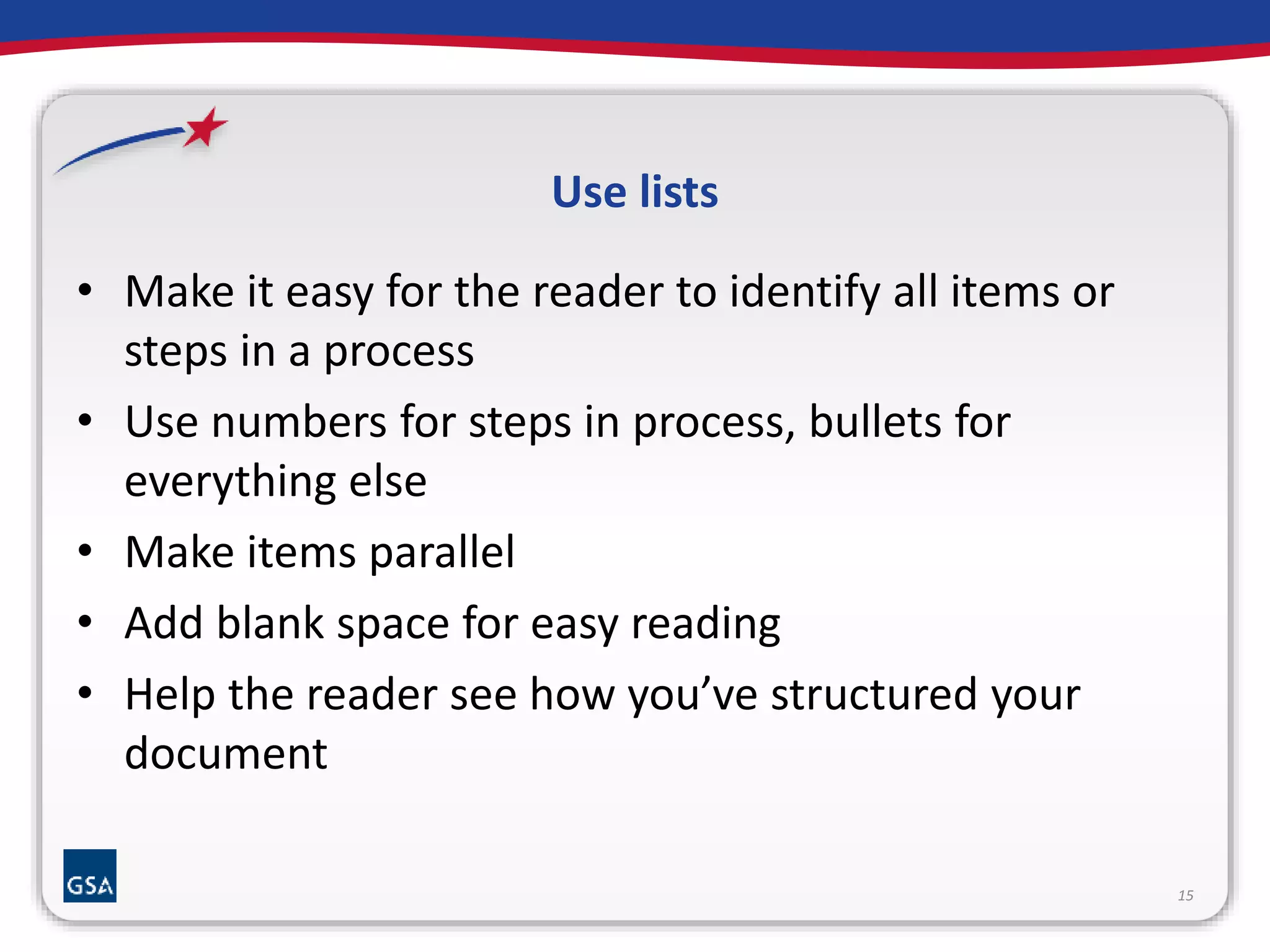This document is a briefing presented by Katherine Spivey, focusing on the importance of plain language in government communications, as mandated by the Plain Writing Act of 2010. It outlines key principles of plain language, benefits of implementing these principles, and offers guidelines for effective writing to enhance understanding and reduce costs. The document also highlights training resources and encourages joining the Plain Language Action and Information Network for further support.






























